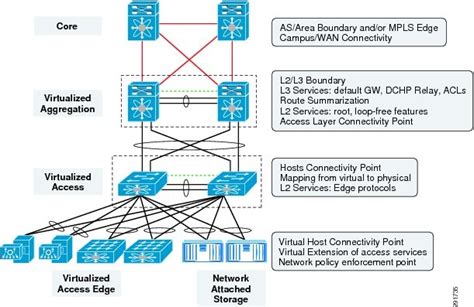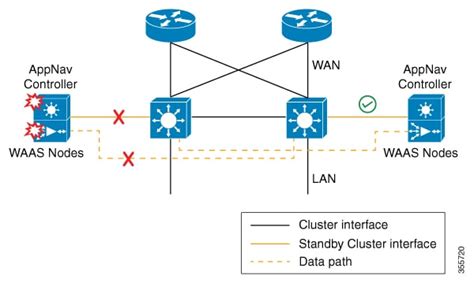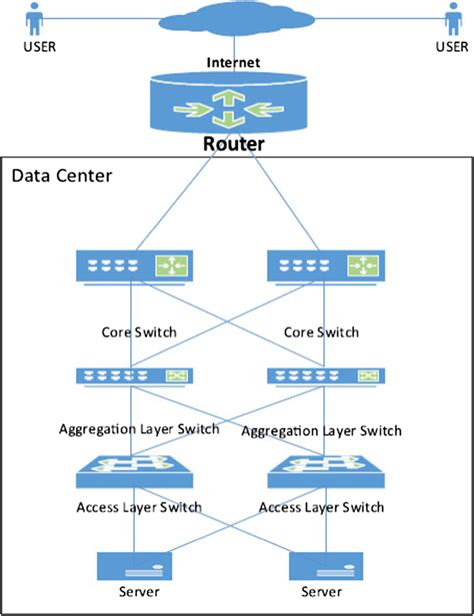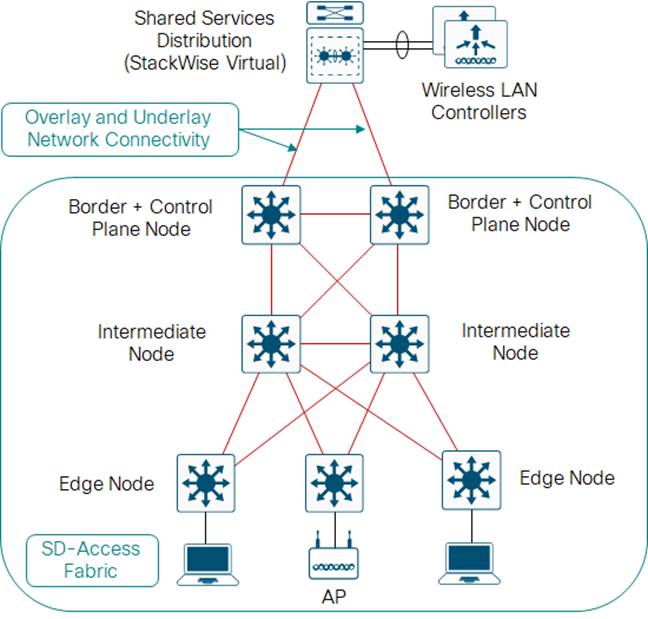Wide Area Networks (WANs) have become crucial in connecting students, educators, and institutions within virtual learning communities. As online education continues to grow, the need for reliable, high-performance WAN solutions has never been more essential. These networks facilitate seamless communication, collaboration, and access to educational resources across vast distances, ensuring that learners can engage effectively, regardless of their location. In this article, we will explore the key features, benefits, and top providers of WAN solutions tailored for educational purposes. Additionally, we will discuss how WANs can be optimized for security, scalability, and cost-effectiveness, while examining future trends in this technology for enhancing virtual learning experiences.
hotigames.com will lead a thorough examination of this topic.
1. Introduction to WANs in Online Learning Communities
Wide Area Networks (WANs) play a pivotal role in modern online learning communities by enabling connectivity across diverse geographical locations. As virtual education expands, the need for robust, high-speed networks becomes increasingly critical to ensure that students and educators can interact without disruption. Unlike Local Area Networks (LANs), which are limited to smaller, localized environments, WANs are designed to cover larger areas, linking multiple campuses, remote learners, and online resources under a unified network.
WANs facilitate the real-time sharing of educational content, video conferencing, and collaborative tools, which are essential for creating an interactive and engaging learning environment. By connecting different sites and ensuring smooth data flow, WANs help overcome the physical barriers of traditional education. This technology not only supports the infrastructure required for virtual classrooms but also enhances the overall experience by providing the necessary bandwidth and reliability. As educational institutions continue to adopt online learning models, WANs serve as the backbone for seamless connectivity, enabling a truly global classroom experience.

2. Key Features of WANs for Virtual Education
Key features of WANs tailored for virtual education are designed to meet the specific needs of online learning communities, ensuring reliable and efficient connectivity. One of the most critical features is high bandwidth, which supports the seamless transmission of large volumes of data, including video lectures, real-time collaboration tools, and interactive educational platforms. Low latency is another essential feature, reducing delays in communication and enabling smooth interactions during live classes and group discussions.
Scalability is vital, allowing educational institutions to expand their network as the number of users and resources grows. WANs also provide robust security features, including encryption and firewalls, to protect sensitive educational data and maintain the privacy of students and educators. Quality of Service (QoS) mechanisms prioritize critical educational traffic, ensuring that important activities like video conferencing and file sharing receive the necessary bandwidth. Additionally, WANs offer centralized management, simplifying the process of monitoring and maintaining the network, which is particularly beneficial for institutions with multiple campuses or remote learners. These features collectively enhance the virtual learning experience, making WANs indispensable for online education.

3. Benefits of Implementing WAN Solutions for Online Learning
Implementing WAN solutions in online learning communities offers numerous benefits that significantly enhance the educational experience. One of the primary advantages is improved connectivity, which allows students and educators to access learning materials, participate in virtual classrooms, and collaborate on projects from anywhere in the world. This global reach ensures that education is not confined to physical boundaries, making it more inclusive and accessible.
WAN solutions also provide enhanced reliability and performance, ensuring that educational activities such as video streaming, real-time discussions, and file sharing are conducted without interruptions. This stability is crucial for maintaining the flow of learning and preventing disruptions that could hinder student engagement and academic progress.
Another key benefit is the ability to support a large number of users simultaneously, making WANs ideal for institutions with growing online programs. This scalability allows schools and universities to expand their digital offerings without compromising on the quality of service.
Security is also a significant advantage, as WANs incorporate advanced encryption and security protocols to protect sensitive information, such as student records and proprietary educational content. This protection is essential in maintaining the trust and confidence of all stakeholders involved.
Overall, WAN solutions empower educational institutions to deliver a seamless, secure, and scalable online learning experience, making them an indispensable tool in the modern educational landscape.

4. Top-Rated WAN Providers for Education
When selecting WAN providers for educational purposes, it’s crucial to consider those that offer specialized solutions tailored to the needs of online learning. Cisco is a leading provider known for its robust and scalable networking solutions, offering high-performance WAN services that ensure reliable connectivity and security across multiple locations. Their software-defined WAN (SD-WAN) technology is particularly suited for educational institutions, providing centralized management and easy scalability.
Another top-rated provider is Juniper Networks, which offers a range of WAN solutions designed to support the demands of virtual education. Their services emphasize low latency and high bandwidth, essential for real-time communication and seamless content delivery.
Fortinet is also highly regarded for its focus on security, offering WAN solutions that integrate advanced threat protection and encryption. This makes it an ideal choice for institutions prioritizing data privacy and secure access.
These providers stand out for their ability to deliver reliable, secure, and scalable WAN solutions, making them excellent choices for enhancing online learning environments.
5. Security Considerations in WAN Setup for Online Learning
Security is a critical aspect of WAN setup in online learning, as it ensures the protection of sensitive data and the integrity of educational operations. When implementing WAN solutions, educational institutions must prioritize encryption to safeguard data as it travels across the network. This encryption ensures that student records, academic content, and communications remain confidential and secure from unauthorized access.
Another vital consideration is the integration of robust firewalls and intrusion detection systems (IDS). These tools help prevent cyberattacks, such as malware, phishing, and denial-of-service (DoS) attacks, which can disrupt the learning process and compromise data security. Additionally, Virtual Private Networks (VPNs) can be deployed to provide secure remote access for students and staff, ensuring that only authorized users can connect to the network.
Regular security audits and updates are also essential to maintain the effectiveness of these measures, as they help identify potential vulnerabilities and ensure that the network remains resilient against emerging threats. By prioritizing these security considerations, educational institutions can create a safe and secure online learning environment.
6. Optimizing WAN Performance for Collaborative Learning Tools
Optimizing WAN performance is essential for ensuring that collaborative learning tools function smoothly in online education environments. One key strategy is prioritizing traffic through Quality of Service (QoS) settings, which allocate bandwidth to critical applications such as video conferencing, file sharing, and real-time collaboration platforms. This prioritization ensures that these tools receive the necessary resources to operate without lag or interruptions.
Another important aspect is reducing latency, which can be achieved by strategically placing data centers closer to users and using Content Delivery Networks (CDNs) to speed up the delivery of educational content. Additionally, employing WAN optimization techniques, such as data compression and caching, can significantly enhance performance by reducing the amount of data that needs to be transmitted across the network.
Regular monitoring and performance tuning are also crucial, allowing institutions to identify bottlenecks and make adjustments as needed. By implementing these strategies, educational institutions can maximize the effectiveness of their collaborative tools and improve the overall online learning experience.
7. Scalability and Flexibility of WAN Solutions in Education
Scalability and flexibility are crucial attributes of WAN solutions in the educational sector, allowing institutions to adapt to evolving needs and expanding user bases. Scalable WAN solutions enable schools and universities to grow their network infrastructure in tandem with increasing numbers of students, educators, and digital resources. This growth can be accommodated without major disruptions or the need for complete overhauls of existing systems.
Flexible WAN solutions also support the diverse requirements of modern education. They allow institutions to integrate various technologies and platforms, from online learning management systems to collaborative tools and multimedia content. This adaptability ensures that WANs can handle a wide range of educational applications, whether for large-scale remote learning or specialized programs.
Additionally, cloud-based WAN solutions provide further flexibility by offering on-demand resources and services that can be scaled up or down based on usage and demand. This model not only supports institutional growth but also helps manage costs effectively by paying only for the resources used. Overall, the scalability and flexibility of WAN solutions enable educational institutions to create dynamic, future-ready learning environments that can adapt to both current and emerging needs.
8. Cost-Effective WAN Options for Educational Institutions
Cost-effective WAN options are essential for educational institutions looking to maximize their budgets while maintaining high-performance connectivity. One approach is to adopt cloud-based WAN solutions, which offer flexibility and scalability without the need for significant upfront investments in hardware. These services typically operate on a subscription model, allowing institutions to pay for only the resources they use.
Another cost-effective option is leveraging SD-WAN technology, which can reduce operational costs by simplifying network management and improving bandwidth efficiency. SD-WAN solutions often lower expenses associated with traditional WAN setups by utilizing a mix of internet connections and optimizing data traffic.
Additionally, many providers offer educational discounts or specialized pricing plans tailored to the needs of schools and universities. Institutions can benefit from these offers by negotiating with vendors or exploring partnerships designed to provide high-quality WAN services at a reduced cost. By considering these options, educational institutions can achieve reliable connectivity while staying within budget constraints.
9. Future Trends in WAN Technology for Virtual Learning Communities
Future trends in WAN technology are poised to significantly impact virtual learning communities, enhancing connectivity and educational experiences. One notable trend is the continued evolution of SD-WAN, which will increasingly incorporate artificial intelligence (AI) and machine learning. These advancements will enable more intelligent traffic management, dynamic bandwidth allocation, and automated network optimization, leading to improved performance and reliability.
The integration of 5G technology is another key development, offering ultra-fast speeds and reduced latency. This will facilitate seamless real-time interactions and high-quality video streaming, crucial for immersive virtual learning environments. 5G’s increased bandwidth will also support the growing use of advanced technologies such as virtual reality (VR) and augmented reality (AR) in education.
Additionally, the rise of edge computing will enhance WAN performance by processing data closer to its source, reducing latency and improving response times for interactive learning tools. Enhanced security features, including advanced encryption and blockchain technology, will further protect educational data and maintain privacy.
As these technologies evolve, they will shape the future of virtual learning by providing more robust, flexible, and secure WAN solutions tailored to the dynamic needs of online education.
In conclusion, WAN solutions are essential for creating effective and reliable online learning environments. By understanding their key features, benefits, and top providers, educational institutions can enhance connectivity, security, and performance in virtual classrooms. Implementing cost-effective and scalable WAN options allows for adaptability and growth, while staying abreast of future trends such as AI-driven SD-WAN and 5G technology ensures institutions remain at the forefront of digital education. Investing in the right WAN solutions will ultimately support a richer, more interactive learning experience for students and educators alike.
hotigames.com
